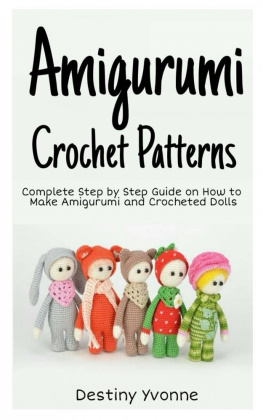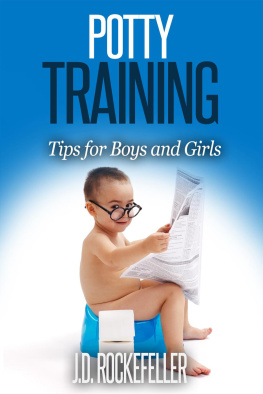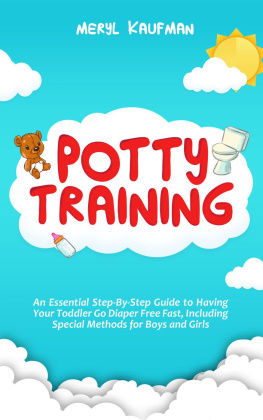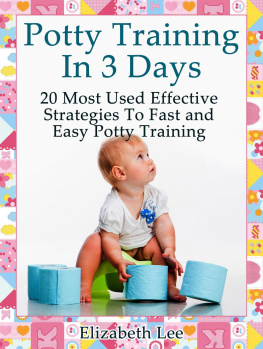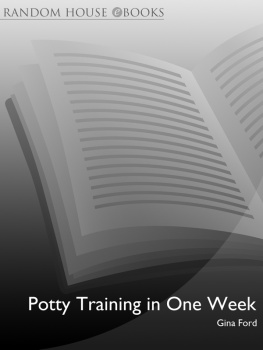POTTY TRAINING
The Complete Moms Guide on How to Potty Train your Child in Less than 3 days
Destiny Yvonne
Copyright@2018
TABLE OF CONTENT
COPYRIGHT NOTICE
No part of this publication should be reproduced rewritten, or used without the consent of the author and all the information contained are the personal analysis of the author
CHAPTER 1
INTRODUCTION
It is the wish of every parent for your toddler to walk straight to the toilet to remove waste
Every parent wants their toddler to be free from diaper and be able to use the potty effectively and without stress, but your bundle of joy can only be able to do that if you potty train them
But to be able to potty train your child requires time, effort and patience to work
CHAPTER 2
WHEN YOU SHOULD START POTTY TRAINING YOUR TODDLER
There is no particular age to toilet train your child, it depends on the child readiness to learn and his physical development
It has been shown that two and half years is the recommended age to begin potty train a child
If you try to potty train a child before he turns two will be futile and lead to disappointment
CHAPTER 3
SIGNS THAT YOUR TODDLER IS READY TO BE POTTY TRAINED
The following behavioral traits indicates that the toddler is ready to be potty trained
He shows interest in the bathroom and often attempts to sit on the toilet
Has less wet diapers which shows that the bowels and bladder of your toddler have a very good holding ability
Soiling occurs at a particular tie and after some intervals
Your toddler shows an urge to urinate or defecate using sounds and facial expressions
Do not relieve himself too much or anywhere meaning that there is voluntary control
Your toddler wakes up after nap with a dry diaper
Shows ability to pull down and pull up the lower clothes
The toddler imitates many actions made by a parent
He becomes independence and has the ability to say No
Shows motor abilities like the ability to walk sit down and move doors
These are signs that your child is ready for potty training
CHAPTER 4
HOW TO PREPARE FOR A TODDLER POTTY TRAINING
It is important to begin the right preparations to have a successful potty training
Choose the right time
You should not train a toddler that is too stressed, example moving to a new place or surrounded by new people is not the right time to potty train such child
You can also potty train according to the season as summer is the best time since your toddler will not wear too much clothes and it is easier to clean any mess that might occur
Choose the weekend
You should reserve three days of the weekends to potty train your child and do not go to any social appointment during this period so that you can stay at home with your toddler to train him
Ensure the Supplies are available
You should stock with tissues and extra clothings for your toddlers and some diapers in case they do not work out, it is important to add additional clothing in case your toddler is unable to control his bladder or bowel movements
Introduce your toddler to the potty chair
Go for potty chair shopping with your toddler and explains the function of each of them
Tell your toddler that he or she has to pee or poop in the potty chair and not the diaper
Have a test run before you start the training
A day before you start the training, dress your toddler in a big shirt for some hours and ask him to tell you when he wants to defecate or urinate and keep an eye on your child to know his behavior
If you suspect that your toddler has to use the toilet but cannot talk, put on the diaper immediately
CHAPTER 5
HOW TO POTTY TRAIN A TODDLER IN THREE DAYS
Here are the steps to potty train your toddler in three days
Potty training
day 1
Dress the toddler as normal, but do not put on diaper
Tell him that diapers left after saying bye and he is free to roam around without diaper
The toddler will sense that are not wearing a diaper is a good thing
Give a toddler a fiber rich breakfast with additional fluids that will allow his bowels and bladder full sooner
Point to the potty chair/seat and tell the kid to inform mom or dad when he wants to relieve himself and explain that he has to pee or poop into the pot
*Go about your usual routine but ensure you stay indoors and let your toddler play with his toys and move around the house and look out for anything that shows that the toddler wants to relieve himself
If the facial expressions or body language shows that your child wants to poop or pee, take him to the toilet
The potty should be put in the toddler rook for the first days for it to be accessible
You can also put it in the bathroom from the start to ensure your child is able to identify the bathroom as where he can relieve himself and also it is easier to clean mess in the bathroom
If the toddler want to excrete, let him sit on the potty and tell him to do it immediately,
To encourage your toddler, you can also seat in the closed seat of the big toilet and tell your child that you are right beside him
Each time your child uses a potty chair, praise him and tell him he is the best
If he stains outside the potty do not praise him or scold him, instead calmly assure him
Both parents should be involved when the toddler gets it regularly from his parents and so ensure that both parents are involved
When you are done, wipe the bottom clean with toilet paper and let the toddler see how you do it and the next day, allow him try to do it by himself with your help
When he is done, ask him to put on his shorts and help him out if he needs assistance, do not give him underpants since they make him feel like he has a diaper, it is ok for the toddler to stay without his underwear
Before your child goes to bed, take him to potty and ask him if he wants to relieve himself
To potty train your child in the night, it is advisable to set the alarm and waking up the toddler to go to the toilet at regular intervals
Night time training can be very slow process and needs to be repeated regularly and if you feel you child is too small for night time potty training, then you should focus on day time training and put on the diaper at night
Potty training day 2
The next day, repeat the steps from day one
After breakfast and potty time, you should take the toddlers outdoors only with his underwear and shorts on
The toddler may feel uncomfortable or happy to be outside without diapers and reassure that is good to go out without a diaper and ask him to tell you if he wants to go to the toilet
Do not go too far out of the house, and if you need to, you should go to the terrace or nearby park when your toddler feels the urge to go to the toilet and take him back home to the potty
You can also bring a portable potty with you to make things easy and remember to carry some toilet papers, tissues and hand sanitizers also
On the second day, let the toddler clean himself after using the potty, he may feel reluctant but feel free to tell him to do the it right away
Allow him get involved in cleaning himself up to make potty training interesting for him
Potty training- day 3
You should repeat the steps from day 1 and this time, you should go out for some few hours during the day
Going out for a longer time can make your child confident and help him know that he needs to visit the potty every time he wants to pee or poop
Next page

